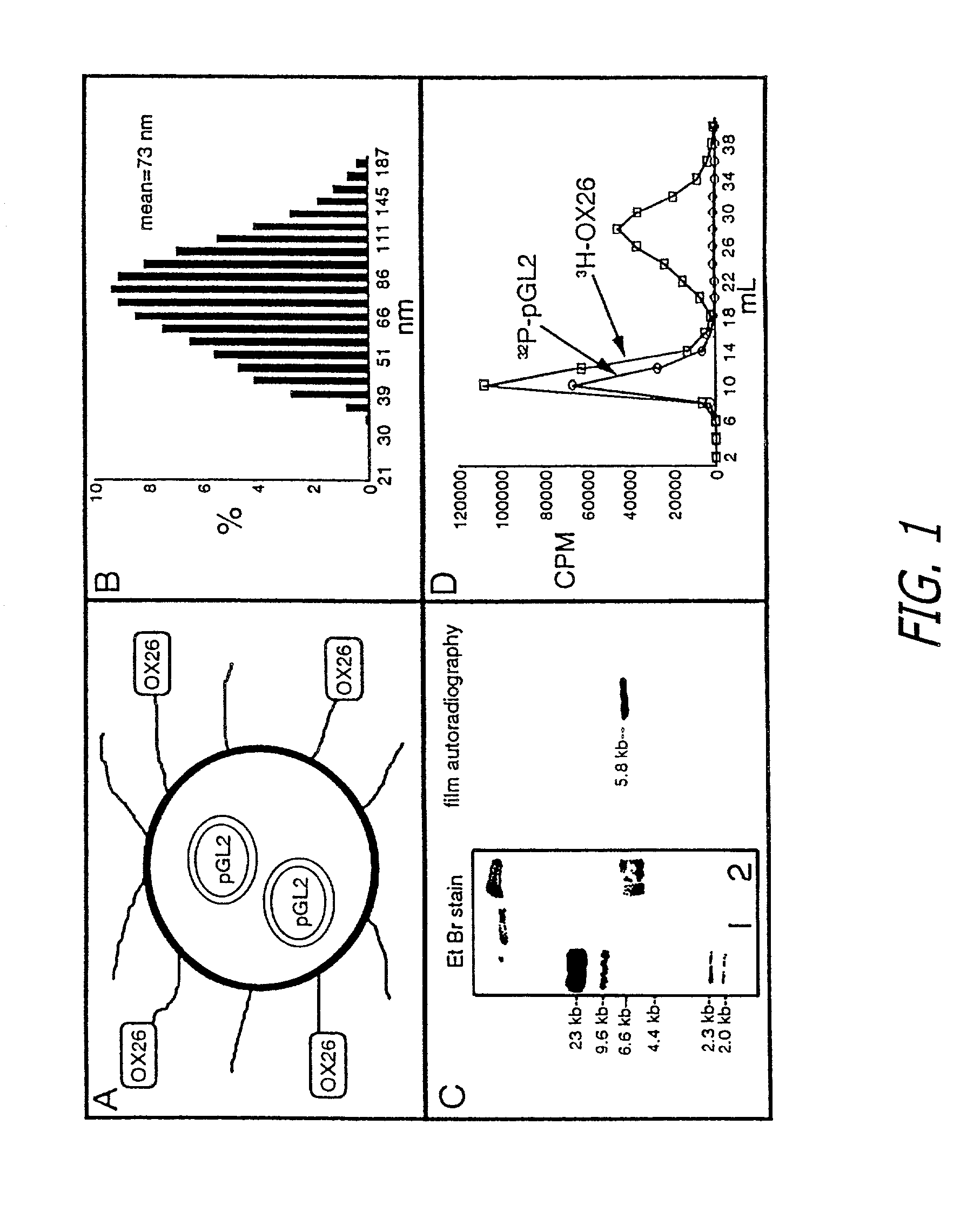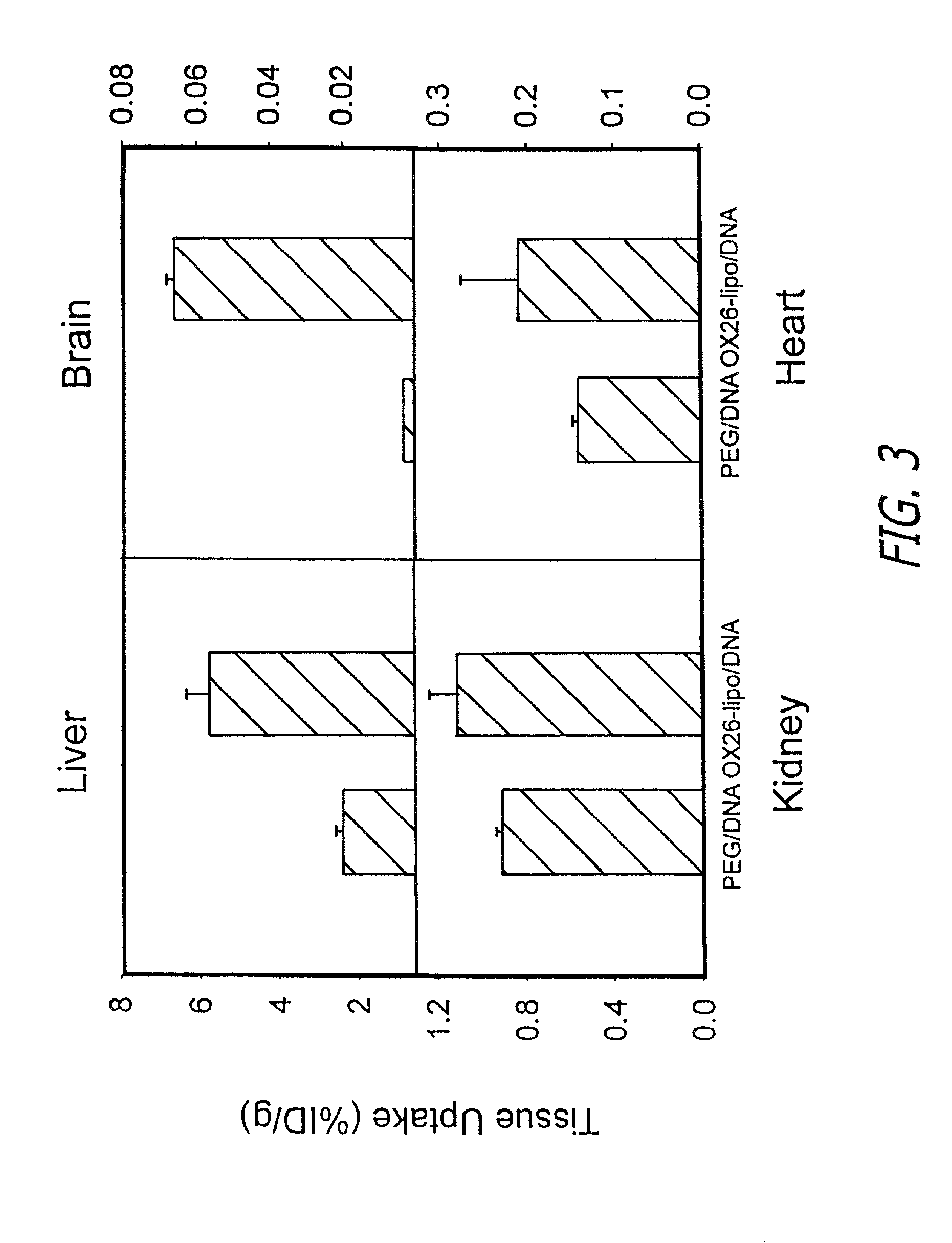Non-invasive gene targeting to ocular cells
a gene and ocular cell technology, applied in the field of non-invasive gene targeting to ocular cells, can solve the problems of inability to stabilize the electrostatic interaction between dna and polycations, high invasive routes of administration, and inability to invasively apply techniques, etc., to achieve the effect of increasing the plasma bioavailability of dna and increasing the stability of dna located within the immunoliposom
- Summary
- Abstract
- Description
- Claims
- Application Information
AI Technical Summary
Benefits of technology
Problems solved by technology
Method used
Image
Examples
Embodiment Construction
[0041]The immunoliposomes in accordance with the present invention are designed for delivering therapeutic genes across the blood-brain barrier followed by expression in the brain of the therapeutic agents encoded by the gene. The liposomes are a form of nanocontainer and nanocontainers, such as nanoparticles or liposomes, are commonly used for encapsulation of drugs. The liposomes preferably have diameters of less than 200 manometers. Liposomes having diameters of between 50 and 150 nanometer are preferred. Especially preferred are liposomes or other nanocontainers having external diameters of about 80 nanometers. Suitable types of liposomes are made with neutral phospholipids such as 1-palmitoyl-2-oleoyl-sn-glycerol-3-phosphocholine (POPC), diphosphatidy phosphocholine, distearoylphosphatidylethanolamine (DSPE), or cholesterol, along with a small amount (1%) of cationic lipid, such as didodecyldimethylammonium bromide (DDAB) to stabilize the anionic DNA within the liposome.
[0042]T...
PUM
| Property | Measurement | Unit |
|---|---|---|
| diameter | aaaaa | aaaaa |
| thickness | aaaaa | aaaaa |
| diameter | aaaaa | aaaaa |
Abstract
Description
Claims
Application Information
 Login to View More
Login to View More - R&D
- Intellectual Property
- Life Sciences
- Materials
- Tech Scout
- Unparalleled Data Quality
- Higher Quality Content
- 60% Fewer Hallucinations
Browse by: Latest US Patents, China's latest patents, Technical Efficacy Thesaurus, Application Domain, Technology Topic, Popular Technical Reports.
© 2025 PatSnap. All rights reserved.Legal|Privacy policy|Modern Slavery Act Transparency Statement|Sitemap|About US| Contact US: help@patsnap.com



